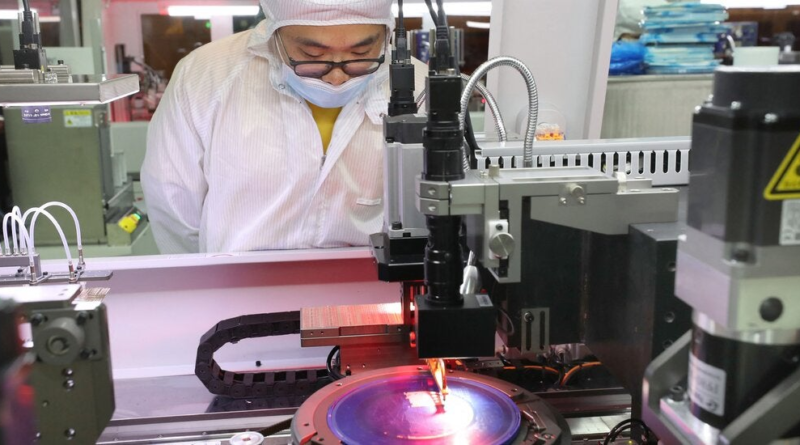Biden Administration Clamps Down on China's Access to Chip Technology (Published 2022) – The New York Times
U.S.-China Relations
Advertisement
Supported by
The White House issued sweeping restrictions on selling semiconductors and chip-making equipment to China, an attempt to curb the country’s access to critical technologies.
WASHINGTON — The Biden administration on Friday announced sweeping new limits on the sale of semiconductor technology to China, a step aimed at crippling Beijing’s access to critical technologies that are needed for everything from supercomputing to guiding weapons.
The moves are the clearest sign yet that a dangerous standoff between the world’s two major superpowers is increasingly playing out in the technological sphere, with the United States trying to establish a stranglehold on advanced computing and semiconductor technology that is essential to China’s military and economic ambitions.
The package of restrictions, which was released by the Commerce Department, is designed in large part to slow the progress of Chinese military programs, which use supercomputing to model nuclear blasts, guide hypersonic weapons and establish advanced networks for surveilling dissidents and minorities, among other activities.
Alan Estevez, the under secretary of commerce for industry and security, said his bureau was working to prevent China’s military, intelligence and security services from acquiring sensitive technologies with military applications.
“The threat environment is always changing, and we are updating our policies today to make sure we’re addressing the challenges posed by the P.R.C. while we continue our outreach and coordination with allies and partners,” he said, referring to the People’s Republic of China.
Technology experts said the rules appeared to impose the broadest export controls issued in a decade. While similar to the Trump administration’s crackdown on the telecom giant Huawei, the new rules are far wider in scope, affecting dozens of Chinese firms. And unlike the Trump administration’s approach — which was viewed as aggressive but scattershot — the rules appear to establish a more comprehensive policy that will stop cutting-edge exports to a range of Chinese technology companies and cut off China’s nascent ability to produce advanced chips itself.
We are having trouble retrieving the article content.
Please enable JavaScript in your browser settings.
Thank you for your patience while we verify access. If you are in Reader mode please exit and log into your Times account, or subscribe for all of The Times.
Thank you for your patience while we verify access.
Already a subscriber? Log in.
Want all of The Times? Subscribe.
Advertisement
